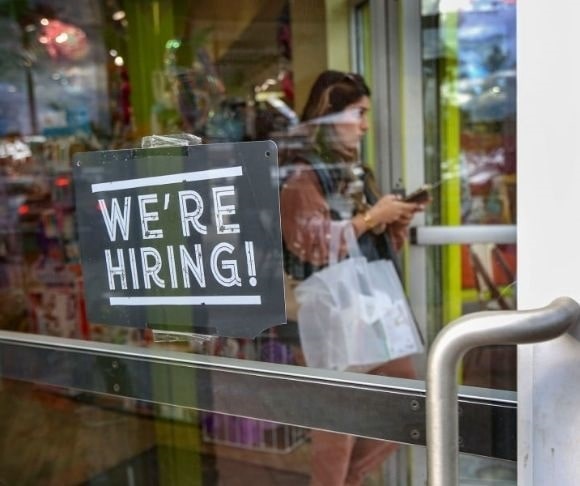What the heck is happening in America’s labor market? The Great Resignation is certainly taking many different twists and turns, and it’s surprising that millions of market analysts, employers, and workers are not wearing neck braces right now. Is anything happening in the United States economy today normal? Inflation is soaring, the gross domestic product (GDP) contracted in the first quarter, and the bears are imbibing the financial markets. Factory orders rose sharply in March, while durable goods orders eased. But the Institute of Supply Management’s manufacturing purchasing managers’ index (PMI) tumbled. Is this training wheels economy about to head off a fiscal cliff, or is it trolling us like an Elon Musk tweet?
State of the US Labor Market
In March, job openings surged to 11.549 million, according to the Bureau of Economic Analysis (BEA). The most significant gains were concentrated in retail trade (155,000) and durable goods manufacturing (50,000). At the same time, job quits advanced to an all-time high of 4.536 million, bringing the quit rate to 3%. Most of the quits to finish the third quarter were in professional and business services (88,000) and construction (69,000). It should be noted, however, that there was a notable decline in the number of hires from 6.832 million in February to 6.737 million in March.
Nevertheless, there are more job openings than unemployed workers. This is the tightest labor market of the post-war era, Goldman Sachs purported. Moreover, the US economy will recover all jobs lost during the coronavirus pandemic sometime this summer, economists forecast.
This is certainly a labor market that favors workers. Companies are hiring, nominal wage growth is impressive, and companies – large and small – are going as far as paying applicants to interview. When price inflation is as high as it is and many consumers are devouring their massive pandemic-era savings, shouldn’t Americans be submitting their CVs to every job offering generous compensation packages?
Earlier this year, a Pew Research Center study found that 61% of employees who were working from home were doing so by choice. A separate Kastle survey discovered that 64% of workers would think about quitting their jobs if asked to return to the office full-time. Recruitment services say that many applicants are refusing employment opportunities that are not fully remote. The COVID-19 public health crisis revealed that employees are productive at home while proving the office landscape is useless for the most part. Plus, too many people got spoiled by saving on transportation costs, enjoying flexible work schedules, and working in their kitchens.
Older Americans have also opted to retire earlier than expected. A November 2021 Pew poll highlighted that half of US adults 55 and older confirmed they left the labor force to take early retirement.

(Photo by John Paraskevas/Newsday RM via Getty Images)
Another factor is that US consumers saved approximately $2.7 trillion throughout the coronavirus pandemic. With nowhere to go and receiving money for nothing, which, of course, added to inflation pressures and the supply chain crisis, they padded their savings accounts. Therefore, as they possess a comfortable cushion, they can be a bit more cautious about where they submit applications.
Perhaps this is part of the anti-work movement that Liberty Nation’s Keelin Ferris reported on last year. “Some leave their current position to pursue a different occupation they are more passionate about or have fewer hours or higher pay,” she wrote. “However, a concerning number of Americans are quitting and don’t plan on working again. Even worse, they’re pushing others to do the same.”
Whatever the case, Jan Hatzius, Goldman’s chief economist, wrote in a recent research note that these conditions will not dissipate until workers exhaust their stockpiles. Once this happens, more people will return to the job market. This, in turn, will relieve wage pressures and lower inflation, Hatzius averred.
Abnormal or the New Normal?
Liberty Nation had recently noted that this is not a normal economy. After promises of “two weeks to stop the spread” and then guarantees that life would return to what it was in 2019 if the nation just took the jab, this is not what many Americans had envisioned when they started receiving their shots. Stagflation risks are growing, inflation will be elevated and sticky, food and energy costs are intensifying, the supply chain crisis is not dissipating, borrowing costs are set to explode, and markets are beginning to go cold turkey. What is going on? As the legendary detective said, “There are many things not called poison which can kill a man.”




